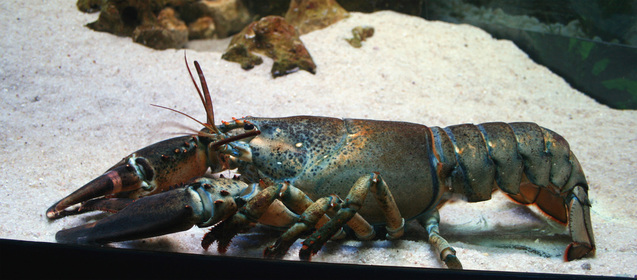The Incredible Crustacean: Lobster! Coastal Zone
By Alex

“AHHHHH!
Did you know that live lobsters make a squealing noise when they are placed in
boiling water? These shy crustaceans have no vocal cords, and it’s only the air
coming out of our shells as steam that does this. Some people prefer their
lobster red with a lemon wedge! Who knew?”
Lobsters live underwater with a hard-shell for protection, which is why
they are scientifically classified as crustaceans. They commonly range from 8 to
24 inches long, and 1 to 9 pounds in average weight, though according to
Guinness World Records, the heaviest lobster was found off the coast of Nova
Scotia, Canada, which weighed a whopping 44.4 pounds! Lobsters have claws, a
tail, a head, and a thorax with legs to move around. Their shell coloration is
usually “dark-bluish to
greenish-brown.”-Wikipedia.
Female lobsters lay and hide eggs year-round, usually in sand. They
continually protect and regularly clean their eggs until they hatch. Once the
eggs are ready for hatching, the female will fan her tail and blow them out of
the sand into the sea. After the lobsters have hatched, they grow and develop
independently.
Maine Lobsters live in the deep coastal waters of the East Coast, the New
England Coast, and the Nova Scotia Coast. Different species of lobster can be
found in every ocean, even some in freshwater sources! Lobsters live on the
ocean floors of coastal waters, which can help to camouflage them.
When lobsters are young and not yet fully-developed, they often become
prey of saltwater fish which include: Scullions, Wolffish, Cod, Skate, Cunner,
and Ocean Pouts. However, when lobsters are fully grown, they very rarely become
prey. When adults are fully grown, they often feed on crabs, shellfish,
echinoderms, marine worms, and dead organisms. As well, they commonly feed on
algae and marine plants.
In Conclusion, lobsters make very popular seafood, and very prosperous
crustaceans! They can be found nearly worldwide, and couldn’t be more fun to
catch, observe, and try!
